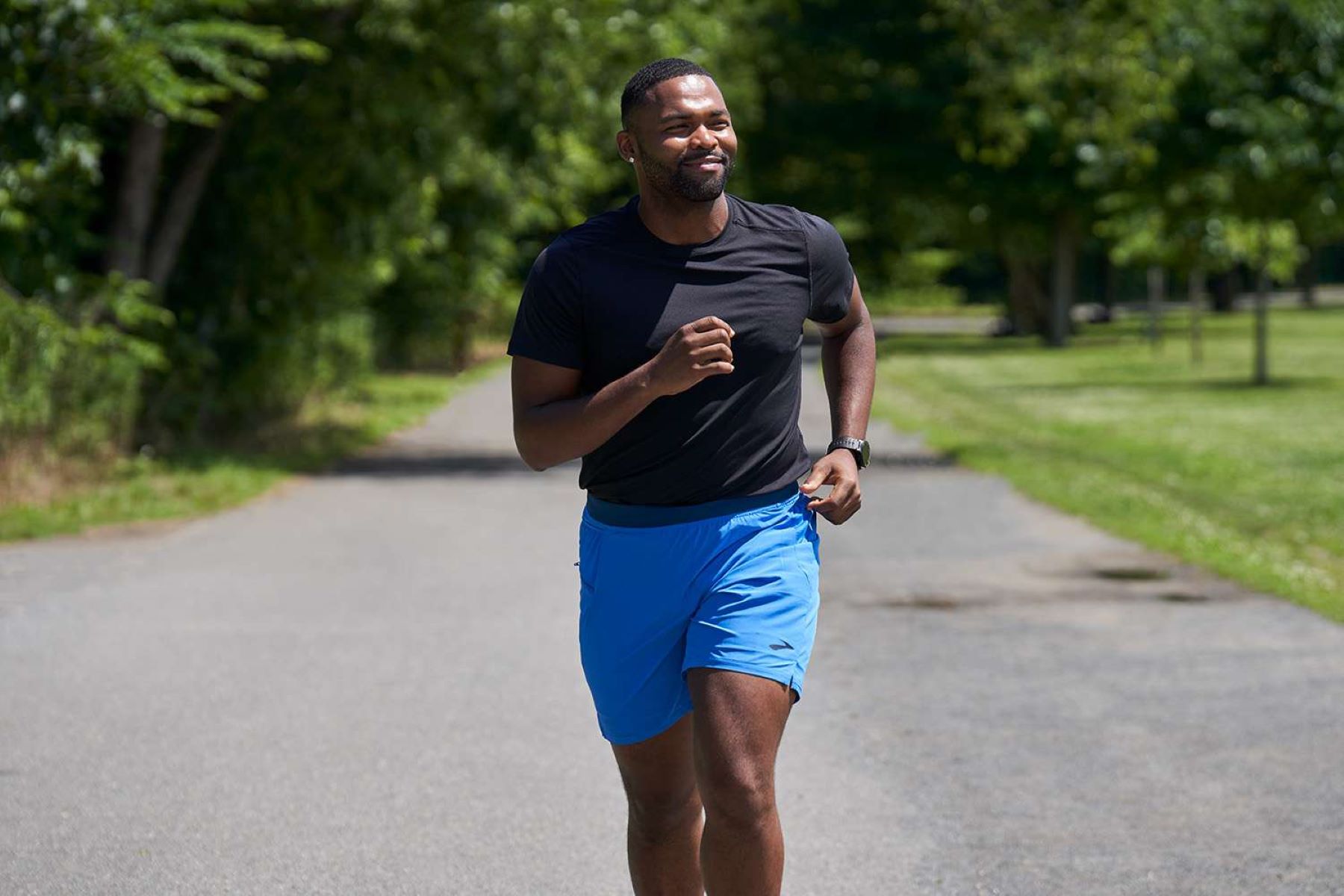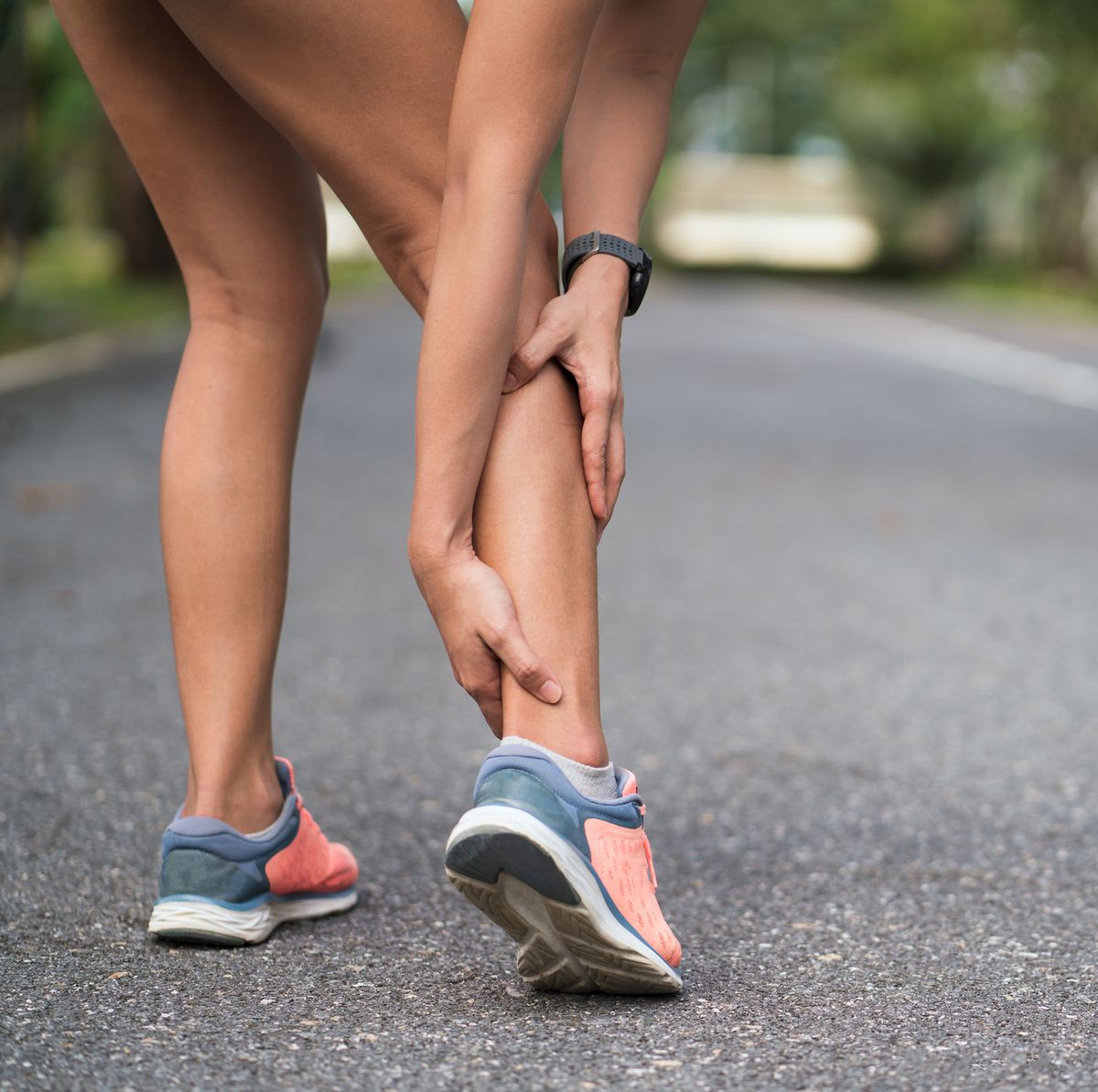

Featured
What Muscles Does Jogging Workout
Published: October 6, 2023
Jogging is a featured workout that targets multiple muscles, including the quadriceps, hamstrings, glutes, and calves. Enhance your fitness and tone your body with this effective exercise!
Introduction
When it comes to physical fitness, jogging is one of the most popular and accessible forms of exercise. Not only does it offer numerous health benefits, but it also provides a great way to explore the outdoors and clear your mind. Whether you are a seasoned runner or a beginner taking your first steps, understanding the muscles that jogging targets is essential for optimizing your workout and avoiding injury.
Jogging is primarily a lower body exercise that engages various muscle groups, including the quadriceps, hamstrings, glutes, and calves. Additionally, it also activates the core muscles and can contribute to upper body strength. By identifying and understanding the specific muscles involved, you can tailor your training to target specific areas and achieve better results.
In this article, we will explore in detail the muscles that jogging works out, their functions, and how to effectively engage and strengthen them. Whether you are looking to enhance your overall fitness level, tone specific muscles, or improve your running performance, this information will guide you towards a well-rounded and effective jogging routine.
Quadriceps Muscles
The quadriceps muscles, also known as the quads, are a group of four muscles located at the front of the thigh. These muscles play a crucial role in jogging as they are responsible for extending the knee and helping you push off the ground with each stride.
The four muscles that make up the quadriceps are the rectus femoris, vastus lateralis, vastus medialis, and vastus intermedius. Together, they work in harmony to provide the power and propulsion needed for jogging.
During jogging, the quadriceps muscles contract concentrically, meaning they shorten against resistance, to extend the knee and lift the leg forward. This action occurs during the swing phase of the jogging gait cycle and allows for a smooth and efficient stride.
As you increase your jogging intensity or tackle uphill terrain, the quadriceps muscles work harder to generate the necessary force. This not only strengthens the muscles but also improves their endurance and overall performance.
To specifically target and strengthen the quadriceps muscles, incorporating exercises like squats, lunges, and leg extensions into your workout routine can be beneficial. These exercises isolate the quads and allow you to progressively increase the resistance, helping you develop stronger and more robust quadriceps.
Regular jogging also helps to improve the quadriceps muscles’ flexibility and resilience, reducing the risk of muscle imbalances and injuries. It is important to include proper warm-up and cool-down stretches to maintain optimal muscle function and prevent tightness or strain.
In summary, the quadriceps muscles are vital for jogging as they facilitate knee extension and leg propulsion. By incorporating targeted exercises and maintaining flexibility, you can strengthen and support your quadriceps, enhancing your jogging performance and reducing the risk of injuries.
Hamstring Muscles
The hamstring muscles are located at the back of the thigh and are essential for jogging. Composed of three main muscles – the biceps femoris, semitendinosus, and semimembranosus – the hamstrings play a vital role in knee flexion and hip extension during the jogging stride.
As you jog, the hamstrings contract eccentrically, meaning they lengthen while under tension, to control the movement of the leg and prevent it from swinging forward too quickly. This eccentric contraction is important for decelerating the leg and maintaining balance and stability.
In addition to their role in leg control, the hamstring muscles also contribute to the power and propulsion needed during the push-off phase of jogging. They play a significant role in generating force to extend the hip and drive the body forward.
Strong and flexible hamstrings are crucial for efficient jogging and injury prevention. Weak or tight hamstrings can lead to imbalances, resulting in decreased jogging performance and increased risk of strains or pulls. Therefore, it is important to incorporate exercises that target the hamstrings, such as hamstring curls, deadlifts, and bridges, into your training routine.
It is worth noting that the hamstrings also interact with the gluteal muscles, forming a powerful posterior chain. This muscle synergy allows for efficient movement and optimal power transfer during jogging. Therefore, exercises that target both the hamstrings and glutes, such as lunges and hip thrusts, can be especially beneficial for maximizing jogging performance.
In summary, the hamstring muscles play a crucial role in jogging by controlling leg movement, providing stability, and contributing to propulsion. By incorporating exercises that specifically target the hamstrings and maintaining flexibility, you can enhance your jogging performance, prevent imbalances, and reduce the risk of hamstring-related injuries.
Gluteal Muscles
The gluteal muscles, also known as the glutes, are a group of muscles located in the buttocks region. They consist of the gluteus maximus, gluteus medius, and gluteus minimus. While often associated with aesthetics, the gluteal muscles are essential for proper jogging form and overall lower body strength.
During jogging, the gluteal muscles play a crucial role in hip extension and stabilization. They work in conjunction with the hamstrings to push the leg backward and propel the body forward. Strong and activated glutes help to generate power and improve running efficiency.
In addition to hip extension, the glutes also provide stability during jogging. They help to control lateral movements of the hips and maintain proper alignment of the pelvis and lower body. This stability is crucial for maintaining balance, preventing injuries, and optimizing running mechanics.
Weak or underactive glutes can be a common issue among runners and can lead to compensations and imbalances. This can lead to inefficient movement patterns and increase the risk of injuries. Therefore, it is important to incorporate exercises that target the glutes, such as squats, lunges, hip thrusts, and glute bridges, into your training routine to activate and strengthen these muscles.
Additionally, incorporating glute activation exercises, such as Clamshells or Monster Walks, before jogging can help to “wake up” the glutes and ensure they are properly engaged during your run. This can be particularly beneficial if you spend a significant amount of time sitting, as it can help counteract the effects of prolonged sitting on glute activation.
Furthermore, focusing on proper hip extension and activating the glutes during jogging will not only enhance your running performance but also contribute to overall lower body strength and stability.
In summary, the gluteal muscles play a vital role in jogging by contributing to hip extension, power generation, and stability. Incorporating exercises that target the glutes and ensuring proper activation will not only improve your jogging performance but also reduce the risk of imbalances and injuries.
Calf Muscles
The calf muscles, specifically the gastrocnemius and soleus muscles, are essential for jogging and provide the power and stability needed for efficient running form. Located in the lower leg, these muscles help with ankle extension, balance, and shock absorption.
During jogging, the calf muscles work in conjunction with the Achilles tendon to generate force and propel the body forward. As your foot pushes off the ground, the calf muscles contract concentrically to extend the ankle and create upward movement.
In addition to ankle extension, the calf muscles also play a crucial role in maintaining balance and stability. They aid in absorbing the impact forces when the foot strikes the ground, preventing excessive stress on other joints and muscles.
Having strong and flexible calf muscles is essential for efficient running mechanics and injury prevention. Weak or tight calf muscles can lead to imbalances and increase the risk of conditions such as Achilles tendinitis or calf strains. Therefore, it is important to incorporate exercises that target the calves, such as calf raises and heel drops, into your training routine to strengthen and improve the flexibility of these muscles.
Stretching the calf muscles after jogging is also important to maintain flexibility and prevent tightness. Simple stretches like standing calf stretches or using a foam roller can help improve calf flexibility and reduce the risk of injuries.
It is worth noting that the calf muscles can become fatigued during long-distance running or high-intensity workouts. Therefore, it is important to gradually increase your running distance and intensity to allow the calf muscles to adapt and prevent overuse injuries.
In summary, the calf muscles are integral to jogging as they provide ankle extension, balance, and shock absorption. By incorporating exercises that target the calves and maintaining flexibility, you can enhance your jogging performance, prevent imbalances, and reduce the risk of calf-related injuries.
Core Muscles
The core muscles, including the abdominal muscles, obliques, and lower back muscles, play a crucial role in jogging. While running primarily engages the lower body, the core muscles provide stability and support, helping to maintain proper posture and efficient running mechanics.
During jogging, the core muscles work to stabilize the pelvis and spine, preventing excessive swaying or rotation. This stability allows for efficient transfer of power from the lower body to the upper body and maintains balance throughout the run. Strengthening the core muscles can improve running efficiency and reduce the risk of injuries.
In addition to stability, the core muscles also contribute to generating power and providing momentum during the arm swing phase of jogging. A strong core helps to facilitate a synchronized and powerful arm motion, which can enhance overall running performance.
Exercises that target the core, such as planks, Russian twists, and deadbugs, can help to strengthen these muscles and improve stability during jogging. It is important to focus on both the front and the sides of the core to ensure balanced strength and prevent muscle imbalances.
Furthermore, incorporating dynamic exercises that involve twisting or rotational movements can be beneficial for simulating the demands placed on the core while jogging. This can help improve the core’s ability to stabilize and generate power during running.
In addition to strength training, maintaining good posture while jogging and engaging the core muscles can enhance their activation and effectiveness. Keeping the core engaged by slightly tucking in the pelvis and maintaining an upright posture can help optimize core stability.
Overall, the core muscles are vital for jogging as they provide stability, support, and power generation. By incorporating exercises that target the core and maintaining proper posture, you can improve your jogging performance and reduce the risk of injuries.
Upper Body Muscles
While jogging primarily focuses on the lower body, the upper body muscles also play an important role in maintaining balance, efficiency, and overall running performance. The muscles of the upper body, including the arms, shoulders, and upper back, contribute to arm swing, posture, and overall stability during jogging.
The arm swing in jogging is not just a random movement; it actually helps to counterbalance the movements of the lower body, aiding in maintaining balance and efficiency. The muscles of the upper body, particularly the deltoids, biceps, triceps, and upper back muscles, play a crucial role in generating and controlling the arm swing.
Efficient arm swing can help to optimize running form and conserve energy by reducing unnecessary movements and keeping the body in proper alignment. Strong and well-coordinated upper body muscles contribute to a more stable and efficient arm swing, which in turn can improve overall running performance.
In addition to arm swing, the upper body muscles also contribute to maintaining proper posture and stability while jogging. The muscles of the upper back, such as the rhomboids and trapezius, help to keep the shoulders back and the chest open, allowing for optimal lung capacity and efficient breathing.
Strength training exercises that target the upper body, such as push-ups, rows, and shoulder presses, can help to strengthen and stabilize these muscles. This can improve arm swing coordination, maintain posture, and enhance overall upper body strength for a more efficient and balanced jogging experience.
It is important to note that excessive tension or tightness in the upper body muscles can impede the natural arm swing and lead to unnecessary energy expenditure. Therefore, it is important to maintain relaxed and loose upper body muscles while jogging, allowing for a natural and fluid arm swing.
In summary, the upper body muscles play a significant role in jogging by contributing to arm swing coordination, maintaining posture, and providing overall stability. Incorporating strength training exercises that target the upper body can improve jogging performance and efficiency, while maintaining relaxed upper body muscles is essential for a fluid and natural arm swing.
Conclusion
Jogging is a fantastic form of exercise that engages various muscle groups throughout the body. Understanding the muscles involved in jogging and how they contribute to overall performance and functionality is key to optimizing your workout routine and preventing injuries.
The quadriceps muscles, responsible for knee extension, provide the power and propulsion needed for each stride. The hamstring muscles help control leg movement, facilitate hip extension, and contribute to power generation. The gluteal muscles play a vital role in hip extension, stability, and balance. The calf muscles are responsible for ankle extension and shock absorption. The core muscles provide stability, posture, and power transfer. The upper body muscles, particularly the arms, shoulders, and upper back, contribute to arm swing coordination and overall stability.
By incorporating targeted exercises that strengthen these muscle groups, you can enhance your jogging performance, improve overall fitness, and reduce the risk of muscle imbalances and injuries. It is also important to maintain flexibility and engage in proper warm-up and cool-down routines to optimize muscle function and prevent tightness or strain.
Remember to listen to your body and gradually increase the intensity and duration of your jogging sessions to allow your muscles to adapt and minimize the risk of overuse injuries. Additionally, incorporating cross-training activities, such as strength training and flexibility exercises, can further enhance your overall jogging performance and muscular balance.
Now that you have a deeper understanding of the muscles that jogging works out, you can design a well-rounded training plan that targets and strengthens these specific muscle groups. So lace up your running shoes, hit the pavement, and enjoy the benefits that jogging brings to your body and mind.





